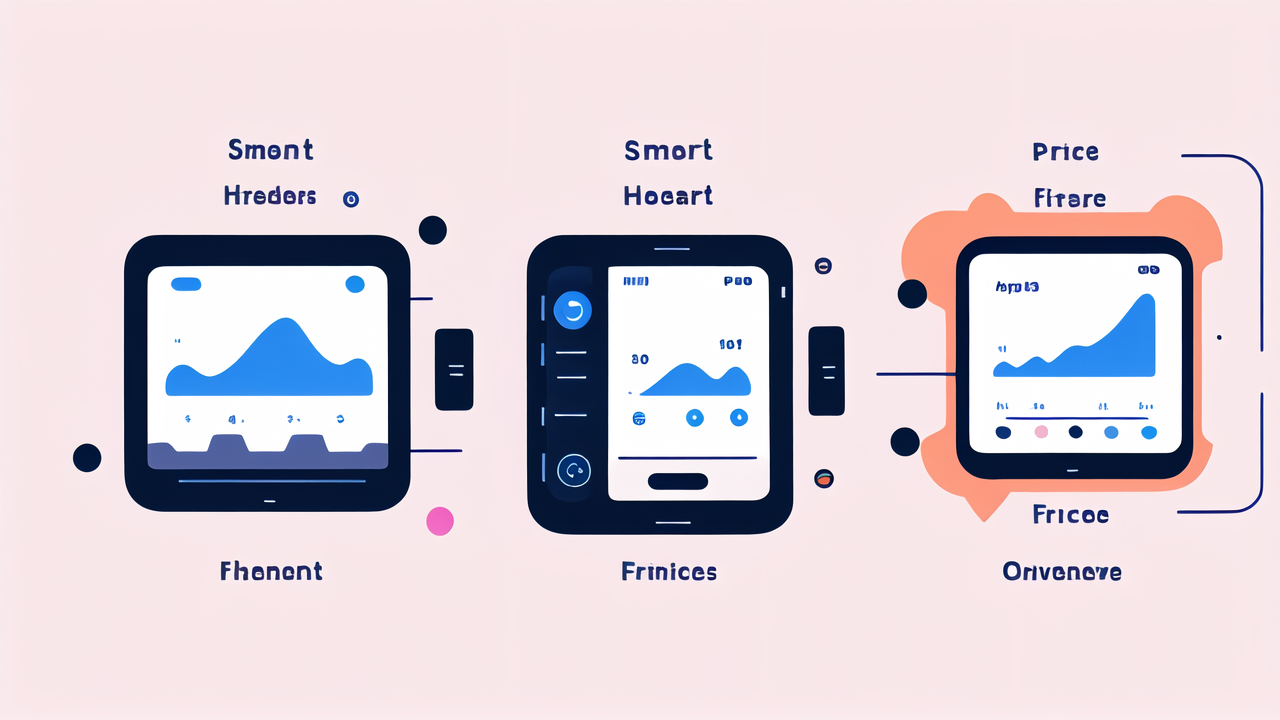The Rise of Smart Watches in the United States: A Market Overview
Examining the Growth of the Smart Watch Industry
The smart watch industry has seen rapid growth in recent years. Sales have soared as more people embrace wearable tech. The U.S. market has been a key driver of this trend. Consumers are drawn to the convenience and features of smart watches. These devices offer more than just time-telling. They've become personal health assistants and communication hubs. The industry's growth shows no signs of slowing down. Analysts predict continued expansion in the coming years.

Key Players and Innovators in the U.S. Market
Several companies lead the U.S. smart watch market. Apple dominates with its Apple Watch series. Samsung and Fitbit also hold significant market shares. These giants continue to innovate and improve their products. Smaller companies like Garmin focus on niche markets like outdoor sports. Google's acquisition of Fitbit signals its commitment to wearables. Competition drives innovation in features and design. Each player strives to offer unique value to consumers. This healthy rivalry benefits users with better products and services.
Consumer Trends Shaping the Demand for Smart Watches
Consumer preferences play a big role in smart watch development. Health and fitness tracking top the list of desired features. Many users want devices that monitor heart rate and sleep patterns. Contactless payments are becoming more popular. People also value long battery life and water resistance. The ability to receive notifications is another key selling point. Customization options allow users to personalize their devices. As needs evolve, smart watch makers adapt to meet new demands. This responsiveness keeps the market dynamic and growing.
Technological Advancements in Smart Watches
The Integration of AI and Machine Learning
AI and machine learning are revolutionizing smart watches. These technologies make devices smarter and more useful. AI can analyze data to provide personalized insights. It helps predict health trends and offer tailored advice. Machine learning improves accuracy in fitness tracking. It can recognize different types of exercises automatically. AI assistants on smart watches are becoming more sophisticated. They can handle complex tasks and queries with ease. As AI advances, smart watches will become even more capable and intuitive.

Wearable Technology and Health Monitoring Capabilities
Health monitoring is a key focus of smart watch development. Modern devices can track a wide range of vital signs. Heart rate monitoring is now standard on most models. Many can measure blood oxygen levels and detect irregular heartbeats. Some watches can even take ECG readings. Sleep tracking helps users understand their rest patterns. Stress monitoring through heart rate variability is gaining popularity. Future devices may be able to measure blood glucose or blood pressure. These advances make smart watches valuable tools for preventive healthcare.
Advancements in Battery Life and Charging Efficiency
Battery life is crucial for smart watch usability. Manufacturers are working hard to extend battery life. New low-power processors help conserve energy. Display technologies are becoming more efficient. Some watches now use solar charging to supplement battery power. Wireless charging is becoming more common and convenient. Fast charging technologies reduce downtime. Some companies are exploring new battery materials. The goal is to create watches that can last for weeks on a single charge. Better battery life means users can rely on their devices for longer periods.
The Future of Sports Watches and Fitness Wearables
Trends in Fitness-Centric Smart Watches
Fitness-focused smart watches are evolving rapidly. They now offer more than basic step counting. Advanced GPS tracking provides accurate route and pace information. Altitude and barometric sensors help outdoor enthusiasts. Heart rate zones guide users during workouts. Recovery time recommendations prevent overtraining. Some watches can create personalized training plans. Water-resistant models cater to swimmers and surfers. Esports modes are emerging for competitive gamers. The line between sports watches and smart watches is blurring. This trend is likely to continue as fitness features become standard.

The Role of Big Data and Analytics in Sports and Health
Big data is transforming how we use smart watches for health and fitness. These devices collect vast amounts of data. Analytics tools turn this data into actionable insights. Users can track long-term trends in their health and fitness. Coaches can use data to optimize training programs. Healthcare providers may use watch data to monitor patients. Population-level data could inform public health policies. Privacy concerns are important as data collection grows. Companies must balance usefulness with data protection. The potential for big data in health and fitness is enormous.
Emerging Technologies and Their Potential Impact on the Wearable Market
New technologies promise to reshape the smart watch landscape. Flexible displays could lead to more comfortable designs. Haptic feedback may provide new ways to interact with devices. Biometric sensors could offer more health data. 5G connectivity will enable faster data transfer and new applications. Augmented reality features may enhance navigation and fitness coaching. Improved voice recognition will make interaction more natural. As these technologies mature, smart watches will become even more powerful. They may eventually replace smartphones for many tasks. The future of wearables is bright and full of possibilities.




Leave a comment
This site is protected by hCaptcha and the hCaptcha Privacy Policy and Terms of Service apply.